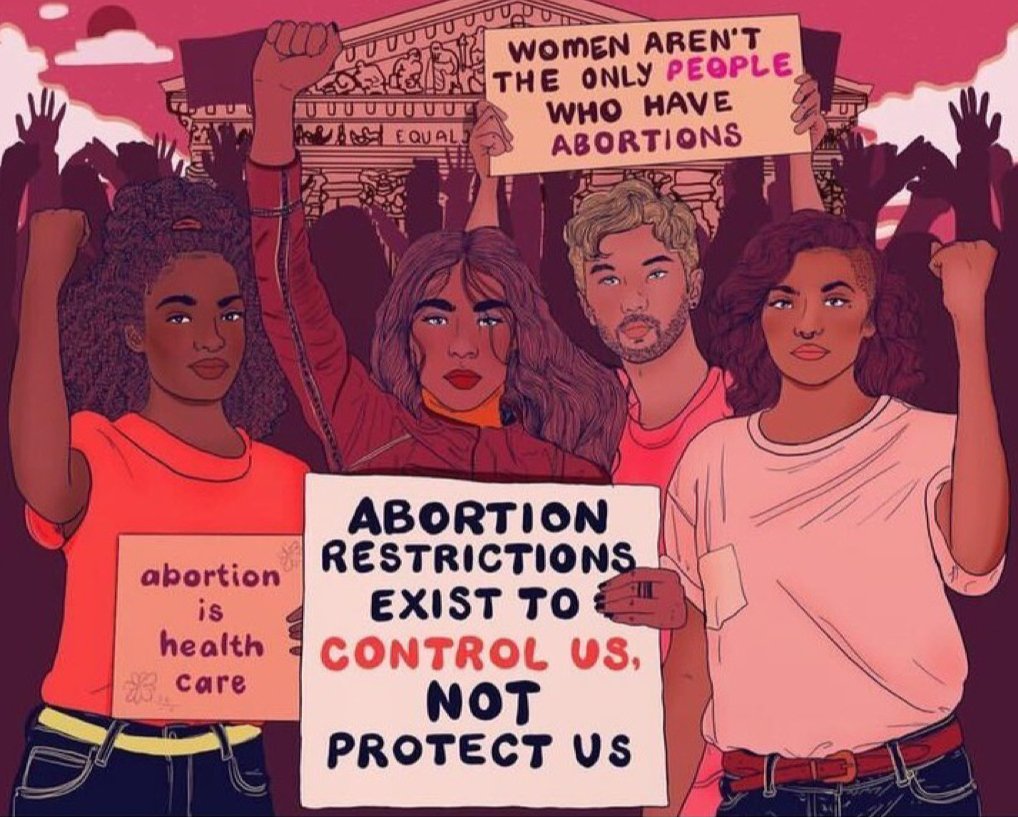Firstly, let’s preface this by saying we are fully aware we are a fandom site. Some of us are mothers, fathers, and women, but all of us are humans. Humans who face the same obstacles as you, our readers, may be facing. Perhaps someone you know, someone you love, and someone you admire may be affected by the overturning of Roe v Wade. Reproductive rights must be preserved as rights to life and liberty, and the pursuit of happiness we are granted.
It would be simple to conflate Friday’s ruling as simply some ‘evil villain’ that can be obliterated by ‘good’, especially given the mediums on which we report. Voices for freedom against the inequities of fascism are aspects of these mediums we love and consume. However, this ruling is impacting real people under governmental trampling of Constitutional rights.
THE BASICS OF ROE V. WADE
Since its original ruling in 1973, the Roe v Wade case marked the milestone of bodily autonomy rights. In 1965, Griswold v Connecticut was the first reported case taken to the Supreme Court relating to these rights. The second case, Eisenstadt v Baird, ruled availability of contraceptives to unmarried couples in 1972. In Roe v Wade, the plaintiff, under the alias Jane Roe, fought to terminate her pregnancy under Fourteenth Amendment rights. The Fourteenth Amendment reads: “No state shall deny to any person within its jurisdiction the equal protection of the laws.” This case, along with Doe v Bolton, made abortion legal before the 24-week mark on the Federal level. This changed in recent years, putting Roe v Wade back on the desks of the Supreme Court.

THE BASICS OF ABORTION
Dilation and curettage are abortion procedures done in earlier stages of pregnancy. Per The Washington Post, 91.9% of abortion procedures occur before the end of the first trimester (around 13 weeks). Abortions in the second and third trimester are exceptionally rare, taking place only when there’s a threat to the life of the mother or fetus.
D&C procedures also exist beyond abortive needs. They are typically diagnostic tools or treatments of certain uterine conditions. Prosecution of such procedures is in direct violation of the patient’s right to medical privacy. It is unconscionable to force someone to carry; let alone criminalize them if they don’t or can’t; including cases of miscarriages and stillbirths. I find this morbidly peculiar, not to mention incredibly invasive to both privacy and rights.
THE ONLY ABORTIONS THAT WILL BE BANNED ARE SAFE ONES
After Roe v Wade, around 80% of the American population support abortion with some limitations. Legal access to contraceptives reduce the need for abortion. With comprehensive sex education, patients are more in charge of family planning. However, contraceptives are not fool-proof. Effectiveness rates range anywhere between 50-90%. Some rates are lower in certain cases. Access to abortions are still necessary to reproductive health, and the health of the individual in general. Since overturning Roe v. Wade, state government officials in trigger states have already mobilized to ban abortions. This forces anyone requiring an abortion to consider traveling to other states with no ban in place.

The Right to Body Autonomy
Rady’s Children’s Hospital in San Diego states, “Body autonomy is the right for a person to govern what happens to their body without external influence or coercion.” Someone in a long-term coma; for example, who previously signed a Do Not Resuscitate order, has the right to deny life-saving or extending interventions. Pregnancy comes with many risks, even for a healthy person who wants to carry. Sometimes complications arise, and the only option to ensure the person’s safety is abortion.
Carrying a pregnancy to term is 33 times riskier than having an abortion; with 0.6 maternal deaths per 100,000 abortions compared to 20.1 maternal deaths per 100,000 live births; according to the Centers for Disease Control.
Research also shows that those most likely to seek abortion care, including women of color, poor women and those with chronic or acute health conditions, are also more likely to encounter serious complications during pregnancy.
– Lisa Marshall, Colorado State Study, Sept 8, 2021
In the past, midwives took care of women in their reproductive cycles. As medicine became more modern, male physicians began overseeing female patients. Soon, termination methods, even birth control, became ostracized in open practice. Patients seeking pregnancy termination then resorted to finding doctors in secret. If patients could not afford this, they took herbal remedies or attempted to self-abort in other ways. These methods are also potentially dangerous to the fetus and the mother. Such mechanisms put both at a greater risk for death, too. Now, with states already banning safe procedures, we will see more negative impacts of restricting reproductive health.

WAYS WE CAN SUPPORT REPRODUCTIVE CHOICES
- Access to contraceptives, whether these are preventative or emergency, and their proper use.
- Comprehensive sexual education that begins at an appropriate age.
- Healthcare access that covers family planning, reproductive, and prenatal health. This includes safe access to abortion.
- Supporting social programs such as free/reduced lunches for children, daycare, and head start programs by voting. Community care benefits everyone.
For more information regarding reproductive choice and abortion resources, click here to view my Instagram Highlights.











